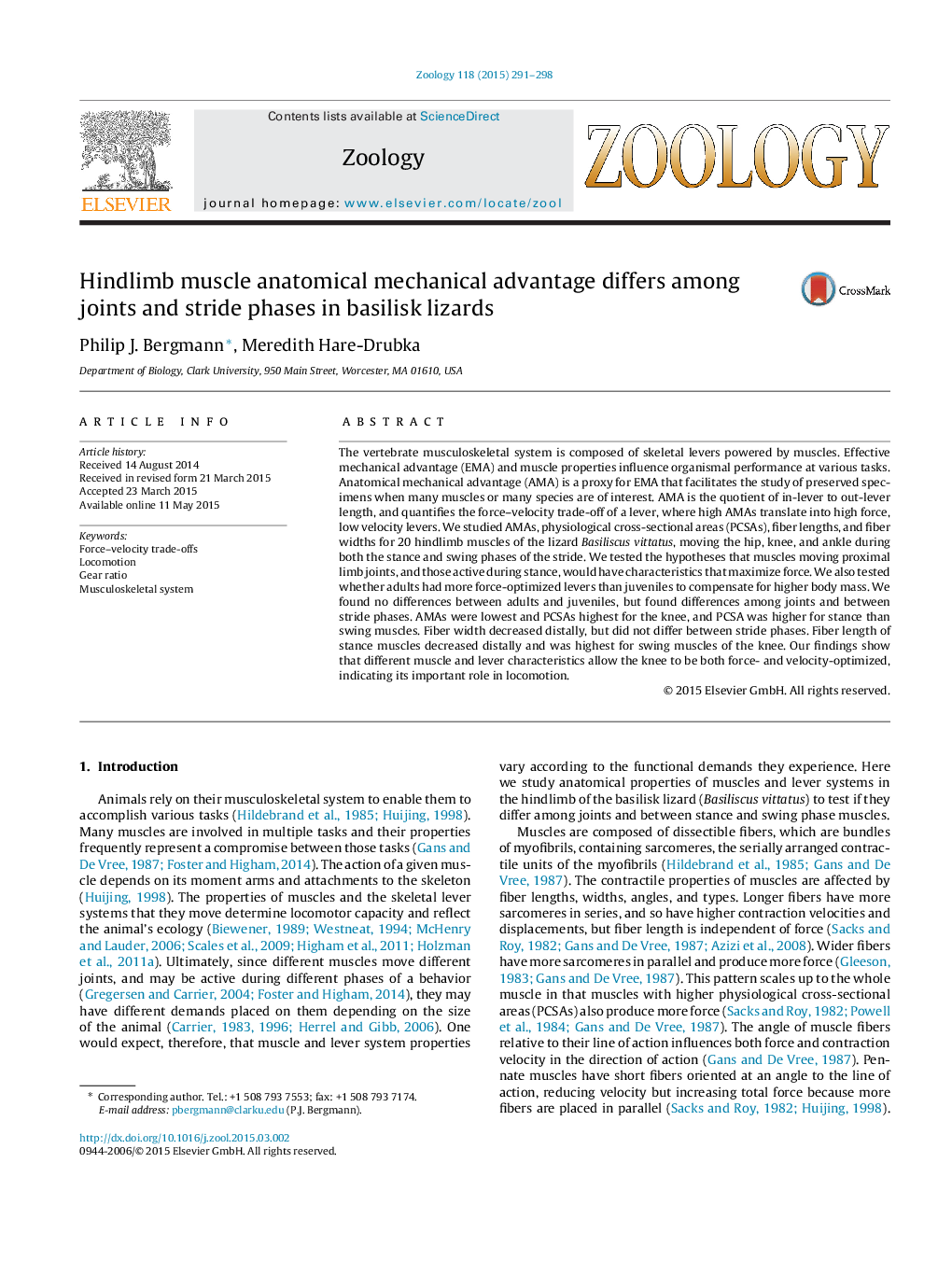| کد مقاله | کد نشریه | سال انتشار | مقاله انگلیسی | نسخه تمام متن |
|---|---|---|---|---|
| 2790985 | 1154825 | 2015 | 8 صفحه PDF | دانلود رایگان |
The vertebrate musculoskeletal system is composed of skeletal levers powered by muscles. Effective mechanical advantage (EMA) and muscle properties influence organismal performance at various tasks. Anatomical mechanical advantage (AMA) is a proxy for EMA that facilitates the study of preserved specimens when many muscles or many species are of interest. AMA is the quotient of in-lever to out-lever length, and quantifies the force–velocity trade-off of a lever, where high AMAs translate into high force, low velocity levers. We studied AMAs, physiological cross-sectional areas (PCSAs), fiber lengths, and fiber widths for 20 hindlimb muscles of the lizard Basiliscus vittatus, moving the hip, knee, and ankle during both the stance and swing phases of the stride. We tested the hypotheses that muscles moving proximal limb joints, and those active during stance, would have characteristics that maximize force. We also tested whether adults had more force-optimized levers than juveniles to compensate for higher body mass. We found no differences between adults and juveniles, but found differences among joints and between stride phases. AMAs were lowest and PCSAs highest for the knee, and PCSA was higher for stance than swing muscles. Fiber width decreased distally, but did not differ between stride phases. Fiber length of stance muscles decreased distally and was highest for swing muscles of the knee. Our findings show that different muscle and lever characteristics allow the knee to be both force- and velocity-optimized, indicating its important role in locomotion.
Journal: Zoology - Volume 118, Issue 4, August 2015, Pages 291–298
